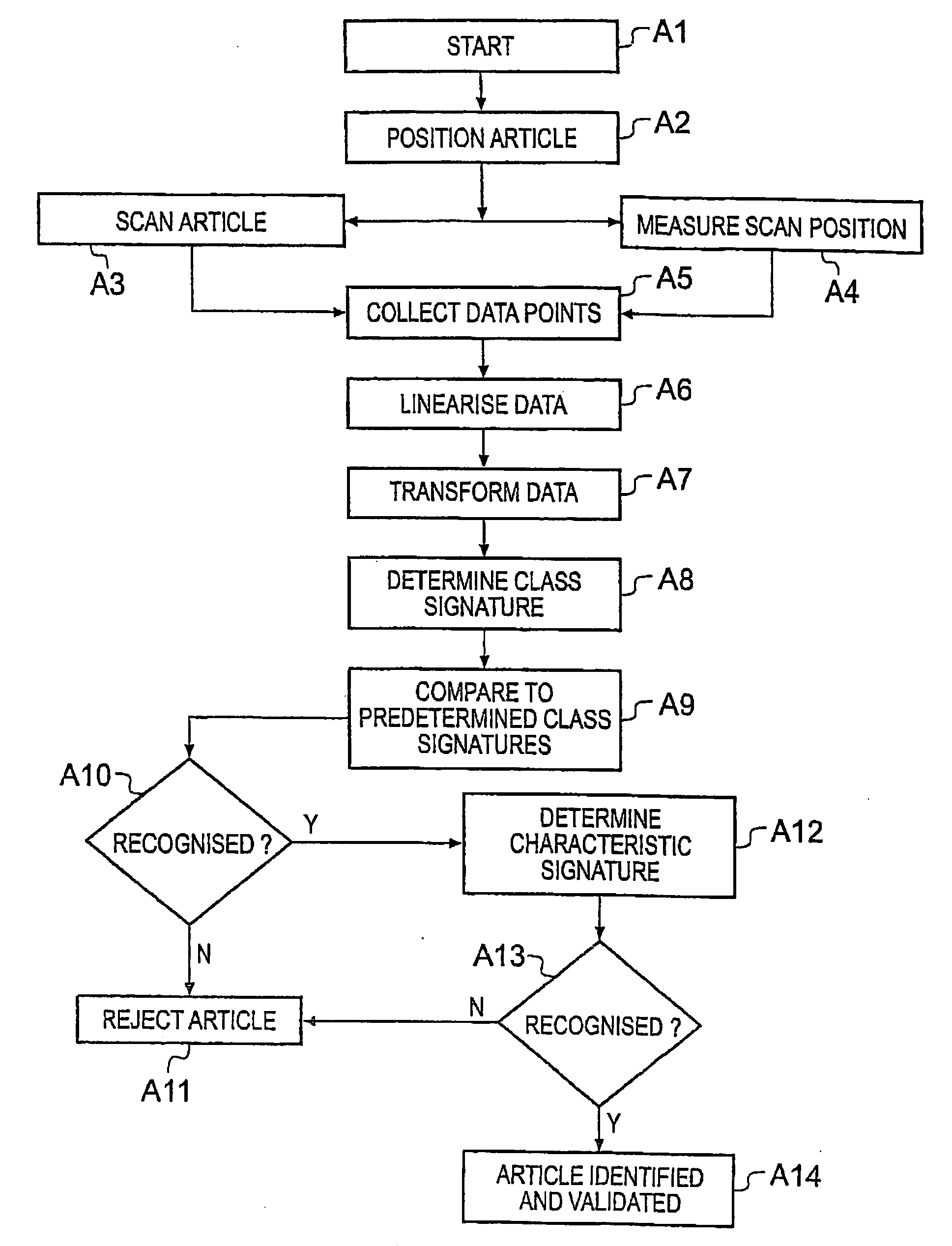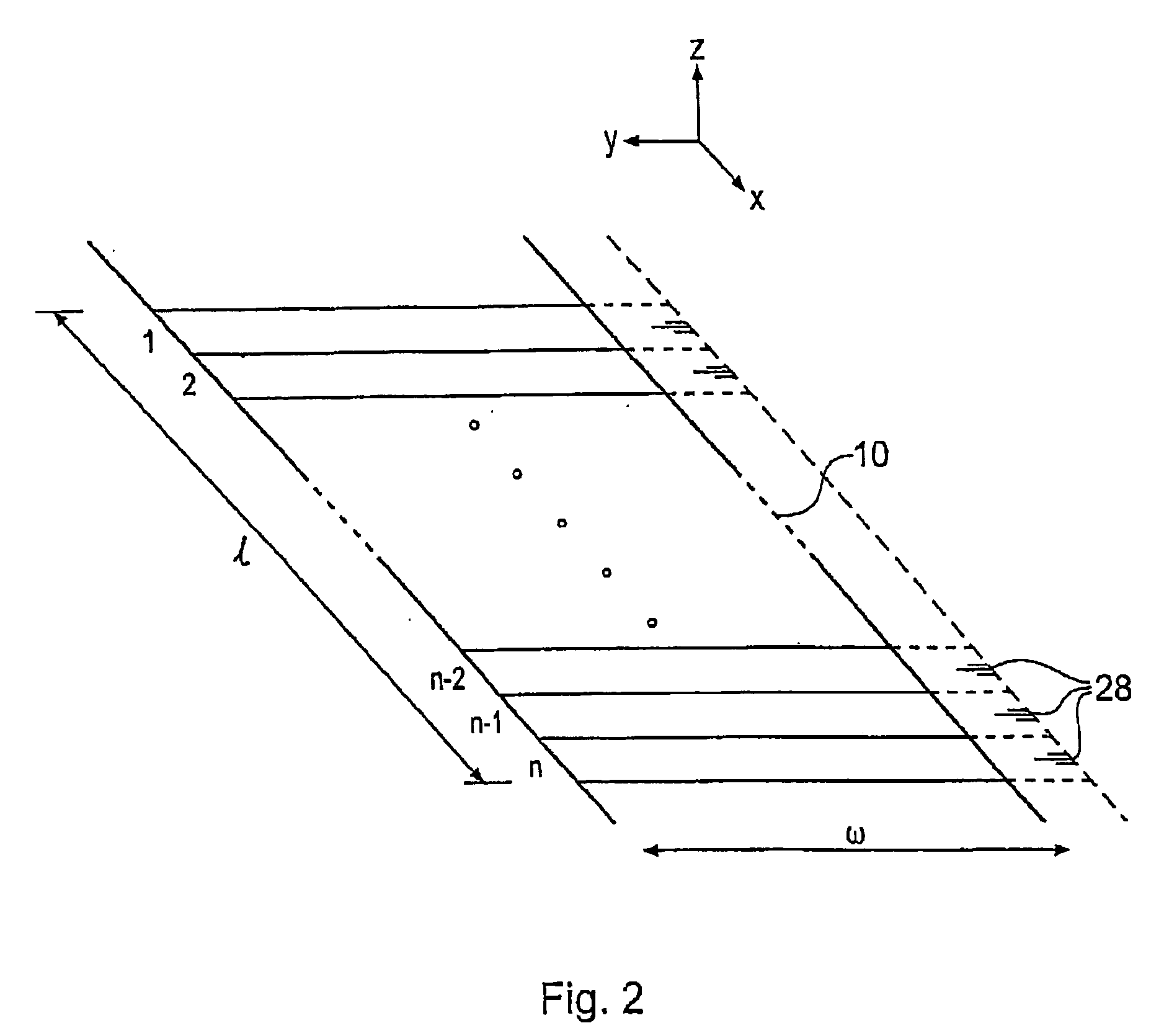Authenticity Verification Methods, Products and Apparatuses
a verification method and authentication technology, applied in the field of security methods, can solve the problems of increasing the chance of random incorrect match between pieces of paper and imposing a significant impression, and achieve the effect of increasing the number of possible class signatures
- Summary
- Abstract
- Description
- Claims
- Application Information
AI Technical Summary
Benefits of technology
Problems solved by technology
Method used
Image
Examples
Embodiment Construction
[0086]FIG. 1 is a schematic side view of a reader apparatus 1 embodying the invention. The optical reader apparatus 1 is for measuring a class signature and a characteristic signature from an article (not shown) arranged in a reading volume of the apparatus. The reading volume is formed by a reading aperture 10 which is a slit in a housing 12. The housing 12 contains the main optical components of the apparatus. The slit has its major extent in the x direction (see inset axes in the drawing). The principal optical components are a laser source 14 for generating a coherent laser beam 15 and a detector arrangement 16 made up of a plurality of k photodetector elements, where k=4 in this example, labelled 16a, 16b, 16c and 16d. The laser beam 15 is focused by a cylindrical lens 18 into an elongate focus extending in the y direction (perpendicular to the plane of the drawing) and lying in the plane of the reading aperture. In an example prototype reader, the elongate focus has a major ax...
PUM
 Login to View More
Login to View More Abstract
Description
Claims
Application Information
 Login to View More
Login to View More - R&D
- Intellectual Property
- Life Sciences
- Materials
- Tech Scout
- Unparalleled Data Quality
- Higher Quality Content
- 60% Fewer Hallucinations
Browse by: Latest US Patents, China's latest patents, Technical Efficacy Thesaurus, Application Domain, Technology Topic, Popular Technical Reports.
© 2025 PatSnap. All rights reserved.Legal|Privacy policy|Modern Slavery Act Transparency Statement|Sitemap|About US| Contact US: help@patsnap.com



